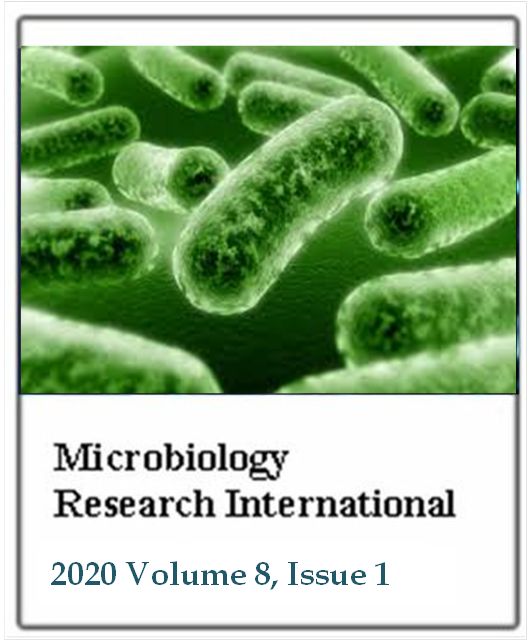Multi-drug resistant Mycobacterium tuberculosis among presumptive individuals attending clinic in North Central, Nigeria
Kome Otokunefor, Tosanwumi Vincent Otokunefor and Stella S. MakpuMicrobiology Research International
Published: February 18 2020
Volume 8, Issue 1
Pages 22-28
DOI: https://doi.org/10.30918/MRI.81.20.011
Abstract
Increasing resistance to antimicrobial medicines is posing a serious threat to public health and patient management globally. In recent years the problem of tuberculosis (TB) has been compounded by the emergence of multidrug-resistant (MDR) strains. Due to rapid growth in the population of the states within the capital region of the country, the study was carried out to give an insight to major areas attention is needed for interventions in the control of drug resistant tuberculosis (DR TB) and patient management. Six hundred and ninety-six sputum samples were decontaminated (using N-acetyl-L-cysteine sodium hydroxide - NALC NaOH), concentrated (via centrifugation) and resuspended in 1.5 ml. of sterile phosphate buffer using ‘Petroff’ method. Each specimen was inoculated into two Lowenstein Jensen slants prepared according to the standard operating procedure (SOP). Ninety-seven culture positive isolates were subjected to drug susceptibility testing (DST) with First-Line anti-TB drugs using ‘proportion’ method by following the SOP. The mean age of the subjects was 33.61 ± 10.92, while the age group with the highest frequency (282, 40.5%) was 29 to 39 years. The study population had a higher representation of males (473, 68%), than females (223, 32%). Six hundred and ninety-six sputum samples were cultured out of which 97 (13.94 %) were culture positive, 542 (78.9%) were culture negative and 57 (8.2 %) were culture contaminated. Samples from Niger State had the highest culture-positive (21, 21.65 %) result. Forty-nine isolates (50.5%) were resistant to at least one of the first-line anti-TB drugs. Thirty six percent (36%) of the isolates exhibited the highest level of resistance to Streptomycin while 4.1% was noted against ethambutol. In total, 32 isolates (33%) were mono-resistant and 9 isolates (9.3%) were poly-resistant. MDR TB was detected in 8 cases (8.2%). A total of 9 different susceptibility profiles were identified in the study. In conclusion, that the study revealed 50.5% of the isolates being resistant to at least one of the first-line anti-TB drugs cannot be ignored. Nasarawa, Benue, Niger, FCT and Kogi from the study seem like ‘hot spots’ for which interventions such as active case finding, contact tracing and the use of radio jingles and Information, Education and Communication (IEC) materials to create more awareness of increasing cases of DR TB in the growing population.
Keywords: Multi-drug resistance, drug susceptibility testing, prevalence, North Central Nigeria.
Full Text PDF
